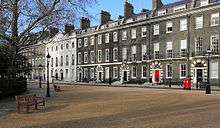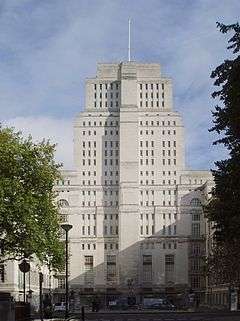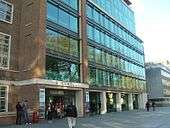Gordon Square

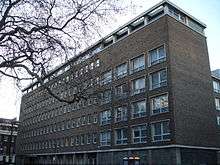
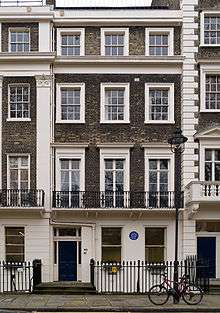

Gordon Square is in Bloomsbury, in the London Borough of Camden, London, England (postal district WC1) part of the Bedford Estate. It was developed by master builder Thomas Cubitt in the 1820s, as one of a pair with Tavistock Square, which is a block away and has the same dimensions. As with most London squares the central garden was originally for the private use of the residents of the surrounding houses, but it now belongs to the University of London and is open to the public. The square is named after the second wife of the 6th Duke of Bedford, Lady Georgiana Gordon, daughter of Alexander Gordon, 4th Duke of Gordon. The university owns many of the buildings in the square and in early 2005 it submitted an application for a refurbishment of the square, including the reinstatement of railings similar to the originals. The work was completed in 2007. The west side of the square is dominated by the listed church of Christ the King and next to it the home of Dr Williams's Library.
The economist John Maynard Keynes (1883–1946) lived at 46 Gordon Square,[2] marked by a blue plaque. Before Keynes moved in, the same house was occupied by a young Virginia Woolf (1882-1941) and her siblings (including the noted painter and interior designer Vanessa Bell) [3] and frequented by other members of the Bloomsbury Group. [4] The writer and biographer Lytton Strachey lived at No. 51. Houses 43 to 46 are now occupied by the School of Arts, Birkbeck, University of London.
The Institute of Archaeology, a department of University College London, is on the north side of the square. The Campaign for Science and Engineering resides in Gordon House, at the square's north-west corner. Gordon Street leads from the north-west corner with the Bloomsbury Theatre close by. The Warburg Institute (part of the School of Advanced Study) is located on the south-west corner of the square, across Tavistock Place.
In August 2000, the east side of the square was used to film part of the bus chase sequence for the movie The Mummy Returns. In the film, the section filmed in Gordon Square depicts the bus swerving to avoid an oncoming car, crashing into another car and veering round the corner into neighbouring Endsleigh Place. The shoot took place late at night and involved the covering of double yellow lines, addition of a red pillar box and replacement of lamp posts, cars, street signs and bollards with period equivalents to fit the era of the film. The streets were also doused with water from a fire tender to make it appear that it had just rained.
Nos. 16–26, on the western side of the Square, were not completed until 1855, and they represent some of the last buildings created by Thomas Cubitt. They now mostly house UCL academic departments. For example, No. 22 houses the Department of Science and Technology Studies.
Other squares on the Bedford Estate in Bloomsbury included:
See also
References
External links
| Wikimedia Commons has media related to Gordon Square. |
Coordinates: 51°31′27″N 0°07′51″W / 51.5243°N 0.1309°W
